Montaione, a mystical village in the woods of the Florentine Valdelsa
Year 1500: Franciscan friars arrive in Montaione, a glassmaking village tucked away in the thickets of a green and wooded area of the Florentine Valdelsa. Among them is a Florentine monk, Friar Thomas of Florence, who before arriving in these hills had been to the Holy Land several times, and perhaps there he had met a Milanese confrere, Bernardino Caimi, who had had an original idea: since making a pilgrimage to the Holy Land was a long, tiring and dangerous undertaking, why not bring the Holy Land to Italy? Caimi had therefore had erected, on the mountains of Varallo in Piedmont, starting in 1486, a complex of buildings that reproduced the holy places of Jerusalem: thus was born the Sacro Monte of Varallo, the first place of its kind on Italian territory. Fra’ Tommaso decided to create something similar in Tuscany, and Montaione was the right place: a locus was chosen for the little Tuscan Jerusalem, where an ecclesia sancti Vivaldi was already attested in the 13th century, and here Fra’ Tommaso had thirty-four chapels built that retraced the Passion of Christ, in imitation of the real Jerusalem. Sixteen years pass, and Pope Leo X, in a Pontifical Brief, grants indulgences to the faithful who make a pilgrimage to Friar Thomas’ wood. Sacro Monte di San Vivaldo, the only one in the region, was officially born.
Of the original thirty-four chapels, only thirteen remain today, but the few that do remain present themselves to our eyes in a manner identical to how they presented themselves to a sixteenth-century pilgrim (except for the few that were filled in later periods): each of the chapels reproduces a moment in the Passion of Christ, through life-size terracotta sculptures. One plunges into the heart of the Gospel story, enters the Pharisee’s house to take part in the supper with Jesus and the Magdalene, drowns in the crowd following the ascent to Calvary, witnesses firsthand Christ’s suffering on the cross, in the Crucifix aedicule one even assumes the position of Christ and finds oneself looking into the eyes of the masses clamoring for his torture.
 |
| The Sacred Mount of San Vivaldo. Ph. Credit Academy of Fine Arts of Carrara |
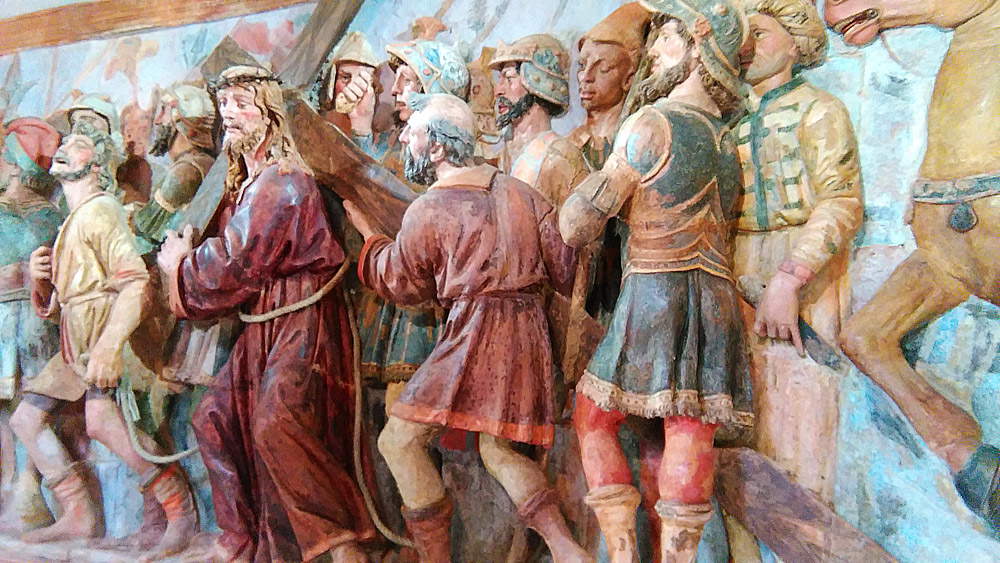 |
| Sacro Monte of San Vivaldo, the going to Calvary. Ph. Credit Finestre Sull’Arte. |
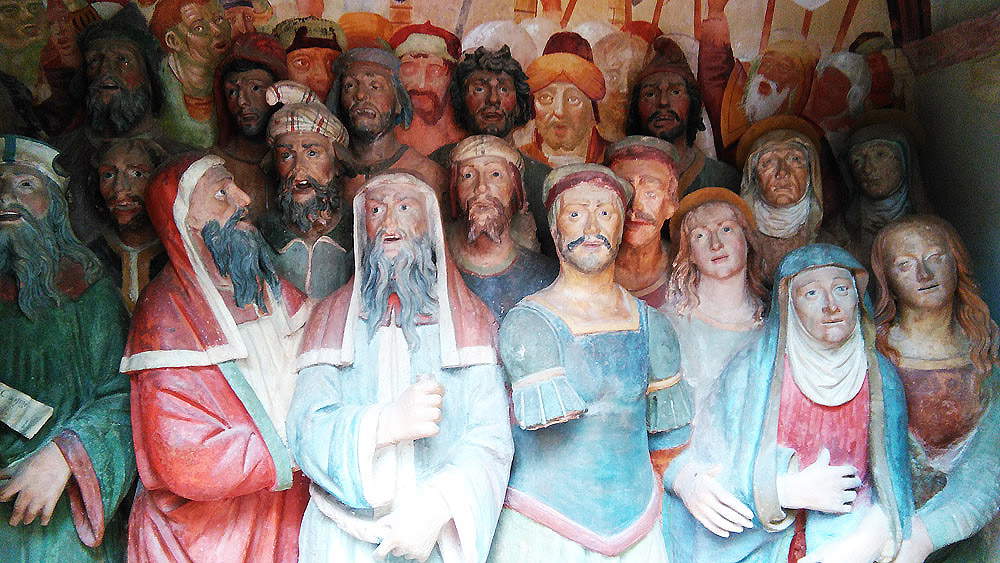 |
| Sacro Monte di San Vivaldo, the aedicule of the Crucifix. Ph. Credit Finestre Sull’Arte |
Today, the route the pilgrim follows is certainly not what it once was: the loss of numerous chapels has inevitably disrupted the unity and harmony of Friar Thomas’ design. It is still, however, a place of dense mysticism and care for art, since the restorations of the 1970s have ensured that the heritage of Sacro Monte di San Vivaldo can better cope with the ravages of time. And it is one of the reasons why many come to Montaione.
The hamlet is only a few kilometers away, reached via the provincial road that winds, winding but smoothly, through thick brush. Montaione’s layout has remained virtually unchanged over the centuries: three parallel streets and a few buildings gathered around the parish church of San Regolo, where that blessed Vivaldo Stricchi da San Gimignano, who lived between the two and fourteenth centuries and gives his name to the hamlet on which Sacro Monte stands (he was never canonized: he is one of many saints by popular acclamation of whom the history of Italian hamlets is full). Today, the saint rests in the church of San Vivaldo, a short walk from the Little Jerusalem complex. Nearby is the church of Saints Joseph and Lucy, which is also known in the village as the “nuns’ church,” because it was the house of worship of an old women’s monastery: its two symmetrical windows placed above the entrance portal make the facade look like a funny smiling face.
 |
| The church of St. Regulus. Ph. Credit Francesco Bini |
 |
| The church of Saints Joseph and Lucy. Ph. Credit Visit Montaione |
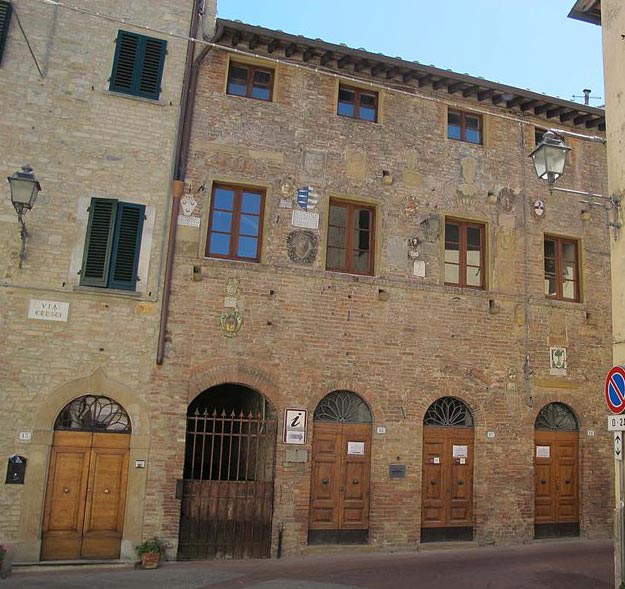 |
| Praetorian Palace. Ph. Credit Francesco Bini |
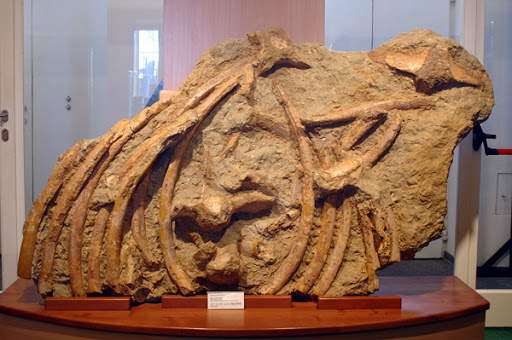 |
| The whale of Montaione |
Continuing along Via Cresci, one first encounters the headquarters of the Permanent Exhibition of Ancient Crafts, a space that commemorates the figure of the village blacksmith, Ernesto Cecconi (who was also mayor of Montaione after the war), and consequently traces the history of work in the past, and then, squeezedbetween two buildings, the thirteenth-century Palazzo Pretorio, the ancient seat of the governor of Montaione, who administered the village on behalf of the Florentines: it was then a noble residence, a post office, a municipal library, and now also the home of the local Museo Civico, which preserves artifacts found in the area, especially from Etruscan and Roman times. The real “star” of the museum, however, are the remains of a fossil whale found in 1980 in the nearby village of Castelfalfi, a hamlet of Montaione (where, moreover, there is the church of San Floriano, a fairly rare case of an Italian church dedicated to this saint venerated in Germanic countries). This is not the only discovery of this kind: in the Museum of Natural History of the Certosa di Calci there is another whale bone of the same species as the one found in Montaione. And since this group of fossils has no features found in other prehistoric whales, anywhere in the world, paleontologists decided to include the name of the village in the scientific name of this ancient cetacean: Balaena Montalionis . And you find Tuscany where you would least expect it.
Article written by the editors of Finestre sull’Arte for UnicoopFirenze’s “Toscana da scoprire” campaign.
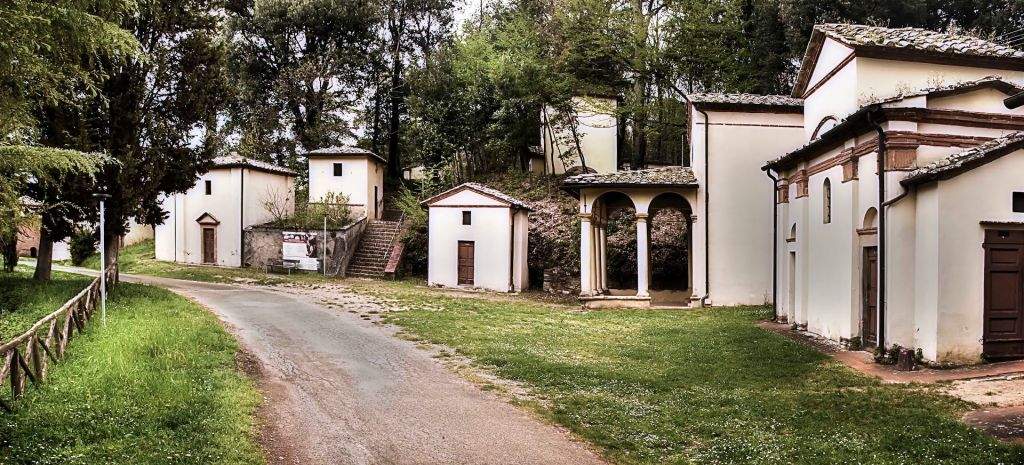 |
| Montaione, a mystical village in the woods of the Florentine Valdelsa |
Warning: the translation into English of the original Italian article was created using automatic tools. We undertake to review all articles, but we do not guarantee the total absence of inaccuracies in the translation due to the program. You can find the original by clicking on the ITA button. If you find any mistake,please contact us.




























